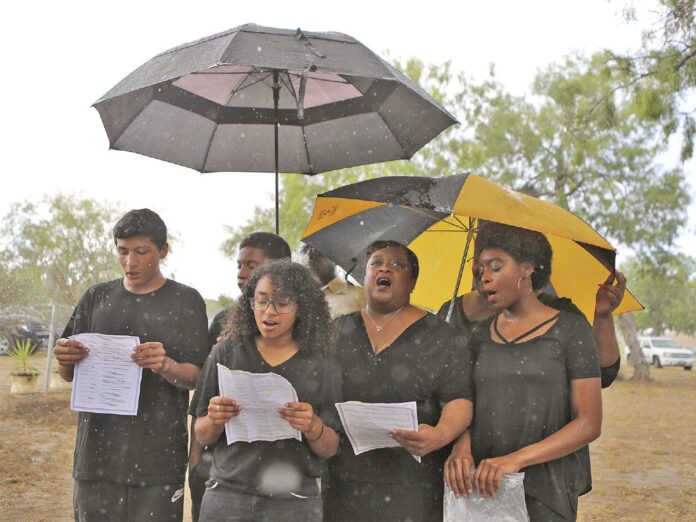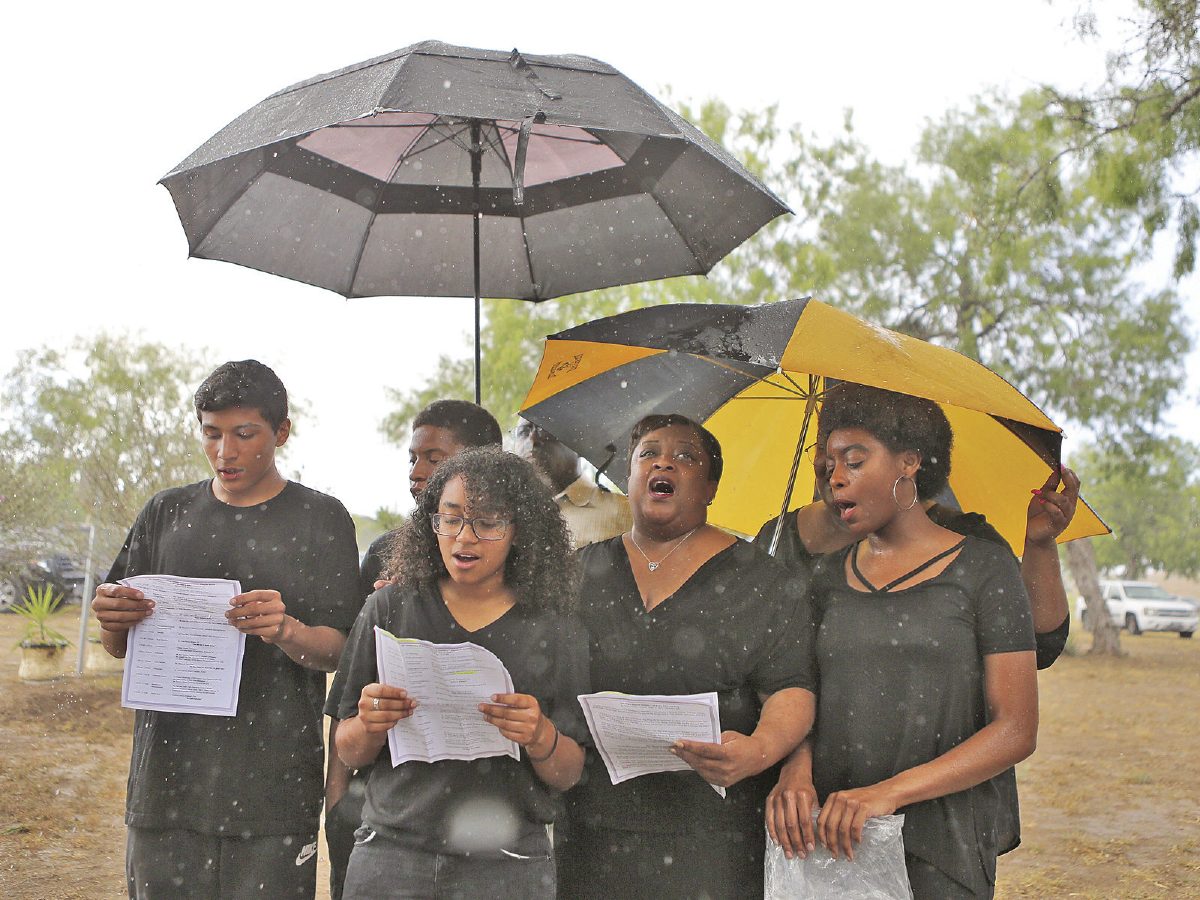
EDINBURG — Rain poured over Hillcrest Cemetery and drenched the back section known as Restlawn as a group of people sang the “Negro National Anthem.”
As the rain came down harder, the people sang louder. Nothing would stop them from celebrating their community, progress and freedom.
The 25th annual Juneteenth memorial service at the historic Restlawn Cemetery in Edinburg took place yesterday morning, where community members of all ages gathered to remember the day slaves were freed in Texas after the Civil War.
“We honor this place because it has significance,” said Raymond Howard, co-chair of the Juneteenth celebration committee. “The people buried here lived during a period of time more difficult than ours now, so we celebrate them in death and in life.”
Restlawn is in the northeast corner of Hillcrest Cemetery where an unknown number of local black residents from the 1900s were buried due to the rest of the cemetery being segregated. Created in 1928, it was originally called the “cabbage patch” because it had been neglected for so many years that it was overgrown and dangerous, leading most of the graves to remain unmarked to this day.
It was not until the ‘60s that a man named Lewis Callis dedicated himself to fixing up the area where his first wife and son were buried, and where he and many of his family members would later be buried as well.
“Sometimes daddy would let me jump on his riding mower with him, and as a little girl I had no idea the significance of what he was doing,” said Kim Callis, Lewis Callis’ daughter. “Love was the catalyst in his heart.”
Ollie Mae Heliton’s parents, grandmother and brother have headstones at Restlawn. She has attended the Juneteenth memorial service for about 10 years and would bring her children to the cemetery when they were younger.
Heliton said many of her cousins are buried there, although she does not know exactly where. She believes those buried at Restlawn fill not just the back corner with crosses and stones, but the entire empty space between the fence and the well-maintained part of the cemetery.
“This is the first and only black cemetery that we could be buried in,” Heliton said, referring to the time when Hillcrest was segregated. “We’re proud to stand out in the sun and have a ceremony here. It’s got to start somewhere.”
Michael Smith, co-chair of the Juneteenth celebration committee and the pastor at Faith Fellowship Church in McAllen, has taken part in the service for the last seven years. He said each year it gets bigger, and he knows how much it means to the people whose families are buried at Restlawn.
“They take pride in knowing that we are celebrating the legacy of their loved ones,” Smith said.
Alex Moreno of the Hidalgo County Historical Commission said part of why the event is still relevant and important today is because racism continues to exist in the country, but celebrating African-American history can serve as a reminder of the change that is yet to come.
“The fight is not over,” Moreno said. “If you just look at the news, you can be sure we’re not there yet. Like the Negro National Anthem says, ‘let us march on until victory’s won.’”






